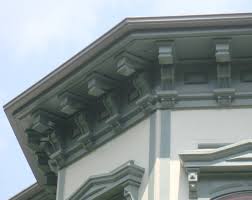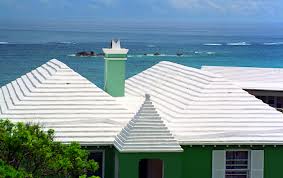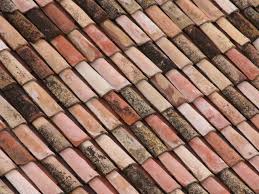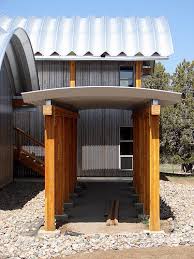Archive for March, 2014
Roof Systems Soffits and Fascia

Soffits and fascia are important elements of a roof system. Proper installation of soffits and fascia improve the appearance of your home as well as help prevent birds and animals from getting into your attic. Well maintained soffits and fascia prevent water from running along the overhang and causing moisture damage. Knowing the purpose of these two areas will help you spot potential problems and be able to describe what you want to your local roofer.
Soffits and fascia close off the areas beneath the roof eaves and can be made from vinyl, aluminum, metal or various woods. Keeping these areas properly maintained includes scraping and repainting peeling surfaces and replacing missing or rotten pieces.
Venting Systems
The flat section on the underside of a roof is a soffit; it closes off the underside of the rafters. Soffit vents, usually small holes allow air to move and prevent moisture issues. Other soffit vents can be simple metal grates attached to the underside of the soffit.
Fascia is the vertical finished edge nailed to ends of the rafters or trusses and protects the wooden edge from damage. Fascia vents usually sit on top of the fascia boards beneath the roof felt.
If your soffit or fascia shows signs of rot or damage, ask your roofer to correct it immediately to prevent any further damage to the rest of your roofing system.
Useful Websites for White Roofs

If you are looking to save on your energy bills and considering a white roof, there are two very useful websites to check out. The White Roof Project and the Cool Roofs Rating Council sites can show you how to paint your roof, what types of materials have the best reflective properties and help calculate your savings. These two sites as well as information from your local roofing company can answer most to all of your questions about white roofs.
White roof project was founded in 2010 by professional film director Juan Carlos. According to their website whiteroofproject.org “Millions of rooftops in America are made of tar and they absorb an enormous amount of heat during the summer months. By coating black tar roofs with a white solar-reflective pain we immediately reduce temperatures inside and out.”
The website has plenty of information if you want to add a white roof to your own building or want to volunteer or donate to get buildings in the New York City painted white. All the roof painting is done by volunteers. Nonprofits and low income buildings can be submitted for sponsorship that will incur no project cost. Sierra Club also partners with WRP in communities across the nation.
In case you were wondering, not all roofing materials are the same, white roof paint is not the same as reflective roof coating. White paint does not have any waterproofing properties and will last only a couple of years. This is where the other site is helpful.
The nonprofit group the Cool roofs rating council rates the “radiative properties of a roof surfacing materials.” Coolroofs.org. the council was created in 1998 “to develop accurate and credible methods for evaluating a labeling the solar reflectance of thermal eminence (radiative properties) of roofing products and disseminate the information to all interested parties.”
As well as checking specific products ratings you can also find rebates and codes. You can get reflective ratings for asphalt shingles, wood shingles, metal, stone, concrete, coatings and more.
Clay Roof Tiles

Traditional clay tile roofs were the standard of a long lasting durable, attractive roof. The heavy tiles outlasted many of the houses they were installed on. Clay roof tiles were used in Babylon and Egypt and then introduced to Rome and across Europe. Clay roofs became very popular after the tragic fires in 1666 in London and 1679 in Boston. Fire codes were established in New York and Boston encouraging the use of Clay roofing tiles due to their fireproof qualities.
Clay tiles became popular roofing materials in northern America in the 19th century by industrial production. A clay roof generally lasts 100 years and often several hundred years. Archeologists in Roanoke Island in North Carolina found clay roofing tiles from the 1585 settlement.
Earlier tiles made by hand
Terra Cotta or clay roof tiles come in a variety of forms, flat, shaped and Spanish barrel shaped tiles. The tiles were originally made by hand. The tile maker spread the clay over their thighs or logs to make the barrel shaped tiles. The clay was then either laid in sand to be baked by the sun or layered in piles of clay tiles, burning coal or wood and then covered by the earth. In 1858 a kiln was developed that was fired by coal and would allow gradual rising of the temperature of the clay tiles.
If you choose to put clay tiles on your home, remember to hire a professional roofer with experience in installing clay roof tiles.
Metal Roofing

Metal roofing is durable and attractive, if properly installed it can last a very long time requiring little maintenance. Metal roofing comes in standing seam roofing, panel roofing and panels made to look like tile, cedar or slate. Standing seam metal roofing is crimped or soldered together and panel roofing screws down.
Copper roofs have been used in architecture for thousands of years. Stainless steel, copper or zinc roofing materials will require very little maintenance over their lifetime. These materials can last over 100 years. Polymer coated metal panels also will last a very long time and require little maintenance until the coating wears off. When the factory finish wears off, metal roofs graded AG or Utility will need to be repainted with acrylic or polyester based roof coatings.
Metal Roofing materials:
• Aluminum, one of the longest lasting metals
• Blend of zinc, aluminum and silicon coated steel, used mostly as a base under factory coated colors
• Copper roofs are corrosion resistant, durable and long lasting
• Corrugated galvanized steel. Wrought iron steel sheet coated with zinc and then roll formed into sheets
• Lead
• Metal tile sheets, usually painted or stone coated steel
• Stainless steel. Usually roll formed into standing seam profiles
• Stone coated steel. Panels made from zinc aluminum coated steel with acrylic gel coating. The stones are usually a natural product with a colored ceramic coating
• Tin
Check with your local roofing company and choose one with experience in installing metal roofing. Oftentimes they will be able to help you decide which metal roofing material is best for your needs and budget.






